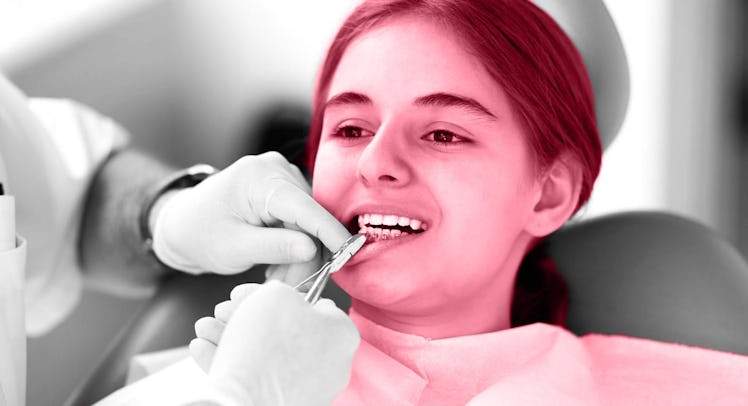How to Pay Less for Kids’ Braces and Orthodontics
Surprisingly, the cost of braces has grown much slower than inflation, but there’s still some sticker shock. Here’s how to manage the cost of orthodontic work.

There are three inevitabilities in life: death, taxes, and orthodontia. But anxiety over braces — and specifically the cost of braces — is somewhat outdated. A few decades ago, they cost as much as a downmarket car. Now, not so much. The cost of braces hasn’t really grown with inflation and today’s parents have many more choices than grandma and grandpa did back in the day. However, navigating those options and their expense can be tricky when parents don’t know what to look for, or which questions to ask.
“Orthodontics is not like buying a gallon of milk,” explains orthodontist Dr. Jamie Reynolds (www.AskDrReynolds.com) author of the orthodontics guide World Class Smiles Made in Detroit. Getting braces isn’t simply like comparing the low end and high end to save a few bucks, he explains. There is a huge range of technology associated with braces and a huge range of costs associated with those technologies.
“If you’re looking to fix one crooked tooth it can be a series of retainers and a few hundred bucks,” Reynolds says. “If you have very complicated problems and you want the fastest treatment and highest quality, you can be talking $7,000 or $8,000.”
That said, the average cost of braces is around $6,000 and will usually take a year or two to complete. But that’s just for the work in the office and does not include costs that parents might not consider when starting orthodontic treatment with a child.
“The cost of orthodontic treatment isn’t just the money. It’s also the comfort or discomfort of the patient, and the quantity of time you spend going back and forth to the office. Those vary quite a bit,” explains Reynolds ”You not only have to ask about money, you have to talk about your time. Ask how many visits it’s going to take. If a doctor doesn’t know or gives you a wide range it means they don’t pay attention to that.”
Even after considering time spent traveling to or waiting in the orthodontist’s office, some parents may miss fees hidden behind a low quote for care. So work that looks enticingly affordable may actually wind up costing far more in the long run.
“A lot of people in orthodontics will compete on prices,” Renolds notes. “But if you miss an appointment there’s a fee. If you break a bracket there’s a fee. If you go over the 24-month treatment time allotted there’s a monthly payment.”
In fact, Reynolds has seen patients who pay their orthodontist thousands of dollars over the cost they thought they’d pay because they stayed in treatment too long. But that’s not the only hidden danger. Some professionals will extend credit through third parties with little to no interest, which can make costs more affordable. But a glance at the fine print explains that late or missing payments triggers anywhere from 20 to 30 percent back interest. That’s a lot of unexpected money to pay out.
That said, most orthodontists understand that braces are frighteningly expensive for parents. So they will offer payment plans that either allow parents to pay at the regular visits or extend payments out past the treatment time with an incentivizing 3 to 5 percent interest. And many offices will allow treatment to get started with an initial payment of $250.
Reynolds notes that there are ways to make orthodontia even more affordable. One way, perhaps counter-intuitively, is to start treatment when a child is younger. When children are younger, and their bones are still growing, it may require less intervention to fix issues that could become much more costly in the future. That’s why Reynolds suggests children be seen by an orthodontist by at least 7-years-old. But if a diagnosis feels fishy, he recommends parents get a second opinion.
How to Afford Braces
- Start treatment when kids are as young as 7-years-old to fix problems before they become more difficult and costly to correct
- Consider the cost of time. More trips to the office mean a greater expense over the course of treatment.
- Don’t be swayed by low-interest rate payment plans that have hidden interest rates that are triggered when payments are late or missed
- Leverage the power of health savings accounts to realize big savings on the cost of braces.
He also recommends leveraging health savings accounts when possible. “That’s the biggest way to save money. Pay for your treatment in pre-tax dollars,” he says. “For some people, that’s as much as a 30 percent discount.”
Finally, Reynolds warns parents away from cut-rate offices. “You could be looking at a place that cuts a lot of corners,” he says. “Orthodontics is a team sport. The skill and experience of the team are very important. It’s safe to assume the places that are the cheapest ones in town aren’t paying their team well and aren’t attracting the best team members.”
This article was originally published on